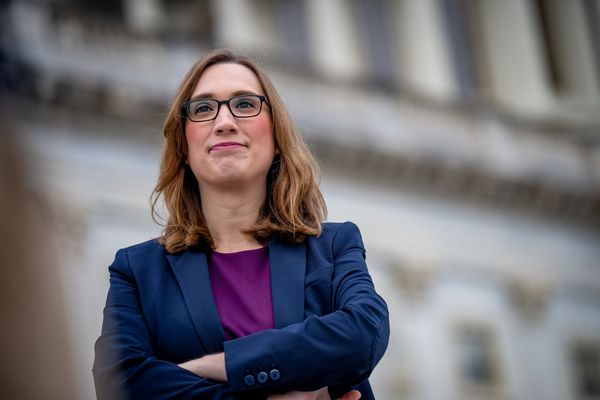
Labor’s abject surrender to US-owned tech giants means we will be seeing fewer Australian stories on our screens. And if history is any guide, the consequences for Australia’s screen industry and culture are devastating.
We’ve been here before. Way back in the infancy of the movie business, Australia was a world leader, producing some of the first feature films. In the silent era, the local industry was booming. But all of this came to an abrupt halt when Hollywood began flooding the market with cheap imported films, paying backhanders to the local theatre chains and forcing Australian productions off the screen. These dodgy practices led to the establishment of a royal commission in 1927, with widespread calls for a quota to ensure Australian stories could be seen in cinemas.
Under intense pressure from Hollywood lobbyists, the government failed to act and the local industry collapsed — it would be more than 50 years before Australian stories would once again be seen on our screens. At the time, a local representative of Fox Studios, Stanley Crick, argued that if a quota for local content was implemented, Hollywood would walk away from Australia which was “too far away and too small a territory for America to invest money here”. A century later, tech-owned streamers used the same threats to avoid a quota on local content.

History is currently repeating itself. The powerful US-owned streaming platforms like Netflix, Amazon, Disney and Apple are fighting to retain their stranglehold on Australian audiences at the expense of local productions.
The streaming giants are making billions in Australia, virtually all of it flowing directly as profits to their bottom line. Yet, like Netflix, they pay little (if any) tax. With the recent introduction of advertising alongside subscriptions, the streamers are now eating the lunch of commercial broadcasters who, unlike their new rivals, must pay for a license and shoulder local content and regulatory obligations.
By comparison, the streamers’ hugely profitable business model here relies entirely upon freeloading on a major public asset, the NBN. Streamers are the biggest data hogs on the national network, surpassing gaming, business, social media and government. The US platforms have not contributed a penny to the $50 billion cost of constructing the NBN or its ongoing maintenance.
That’s not just eating the lunch, but getting it for free.
Aware of the scale of this disruption, Labor’s Minister for the Arts (among other things) Tony Burke made a promise to the screen industry that he would introduce a quota for local content on the streaming platforms by July this year. The deadline passed without explanation, and the plan has reportedly now been shelved.
Given there are no votes to be lost in ensuring Australian stories continue to be shown on our screens, and that the quota has broad cross-party support, what was the hold-up?
Well, for one thing, the bureaucrats somehow left documentary and children’s non-fiction content out of the proposed quota, despite the fact these were part of the government’s own national cultural policy, Revive.
As Crikey has reported, the streaming lobby claims the US-Australia Free Trade Agreement prevents Labor from imposing a quota. They claim quotas would “materially harm” their business and impact US screen industry workers.
This is the same industry that fought its workforce in a 148-day strike last year. US film and TV production is down 40% from its peak, largely because these apparently patriotic businesses have moved production offshore, shopping for jurisdictions willing to subsidise their business. Australia is in the market for these so-called “run away” productions, and this year’s budget increased the subsidies available to foreign-owned movies and big-budget TV series that film here.
Certainly these location incentives offer employment to Australian crews. The streamers, despite their expressed concern for the US industry and its workers, are happy to turn Australia into a bargain basement backlot if it helps undermine labour unions in the US.
But there is nothing Australian about these runaway productions. They do little to enhance our culture, tell our stories or promote our values and voices. Perversely, without ensuring the local content quotas were in place before the location incentives were increased, Tony Burke has made it even harder to get Australian stories on screen.
I’ve been making documentaries here for decades, and rely on a small cohort of experienced editors, directors and production artisans. But with the streamers willing to pay higher fees, I can no longer compete for many of these highly skilled specialists. I don’t blame them for taking the bigger cheque, but it’s led to important projects being shelved.
In an effort to hold off regulation the streaming giants have invested in a minimal number of Australian productions (though the amount has declined recently). While we can wonder at the locations on display in Netflix’s new Australian-located outback soap, Territory, Taylor Sheridan, the creator of the hugely successful Yellowstone, has likely put in a call to his lawyers seeking advice on copyright infringement.
That said, Territory has done well for Netflix around the world, becoming one of its most popular series globally. This proves that the streamers have nothing to fear from being required to make more Australian content in return for their free ride on the NBN. Our skilled storytellers can help fill their voracious appetites for content, just as productions from Korea, Brazil and other countries have shown.
In Europe the streamers have been forced to accept European Union quotas requiring 30% local content and their businesses continue to thrive. Australian producers are recommending a 20% local quota here; if enforced, it’s very unlikely the streamers would walk away from the rivers of gold that flow through the NBN.
We need a government that stands up for Australian culture, but apparently Labor doesn’t have the stomach to fight these digital bullies or call their bluff. A century ago, we caved in to Hollywood and the devastating consequences took decades to repair. This latest broken promise marks the beginning of the end for our distinctive voices and stories on Australian screens.







